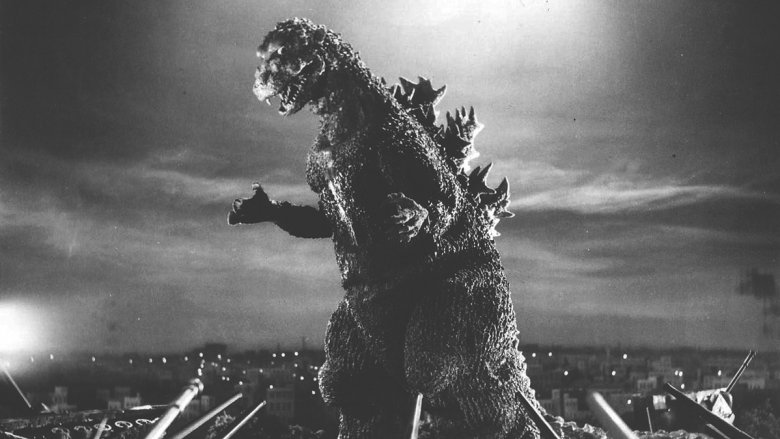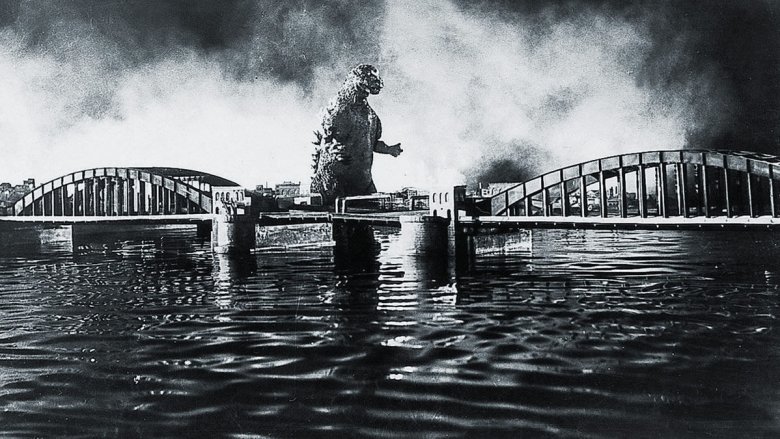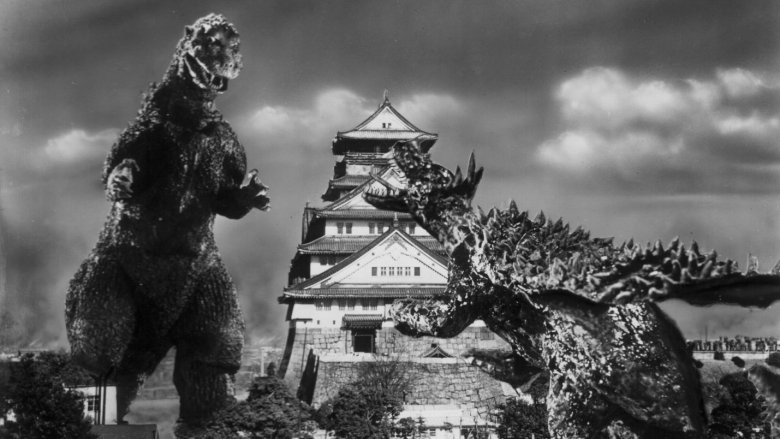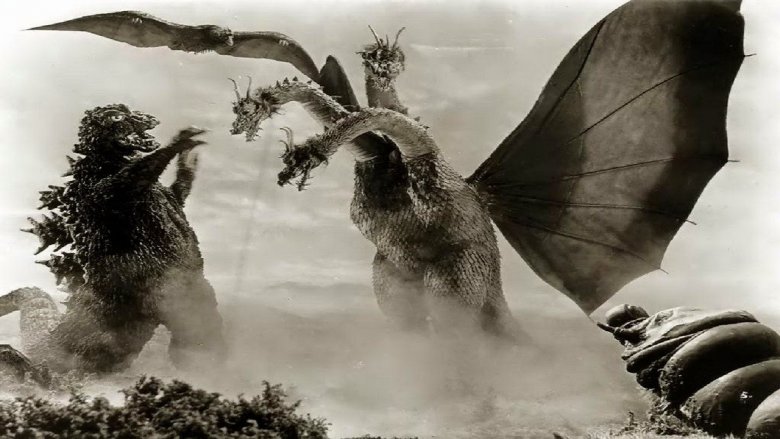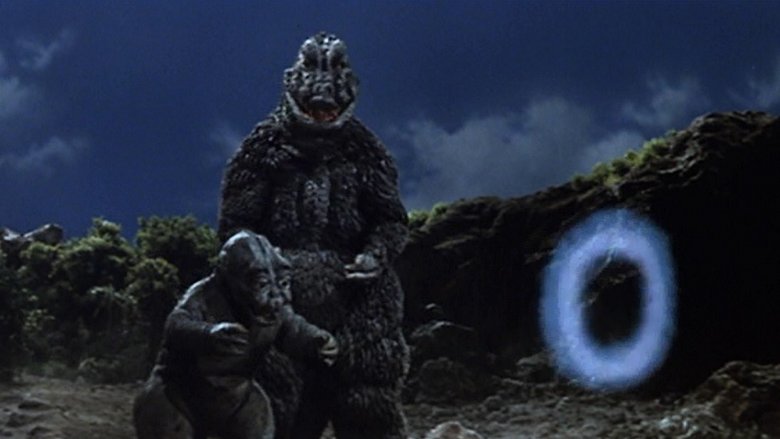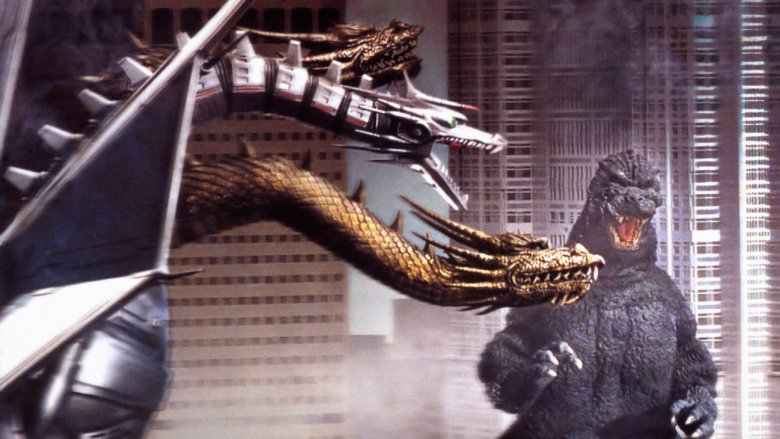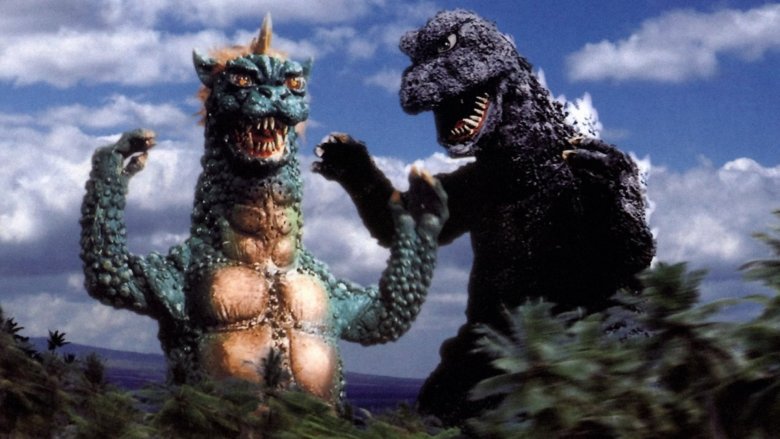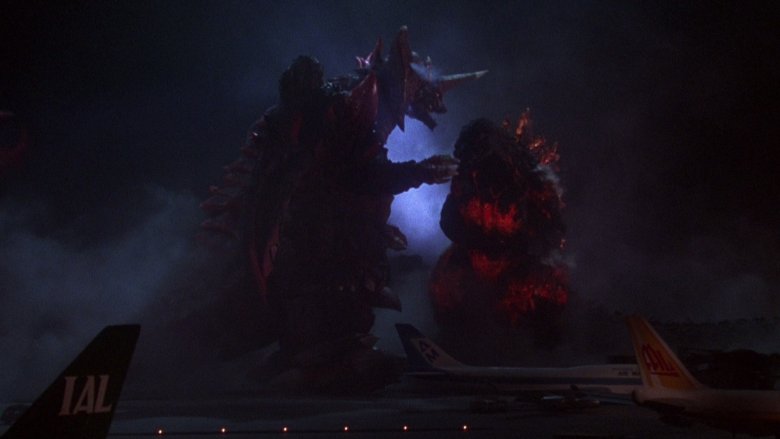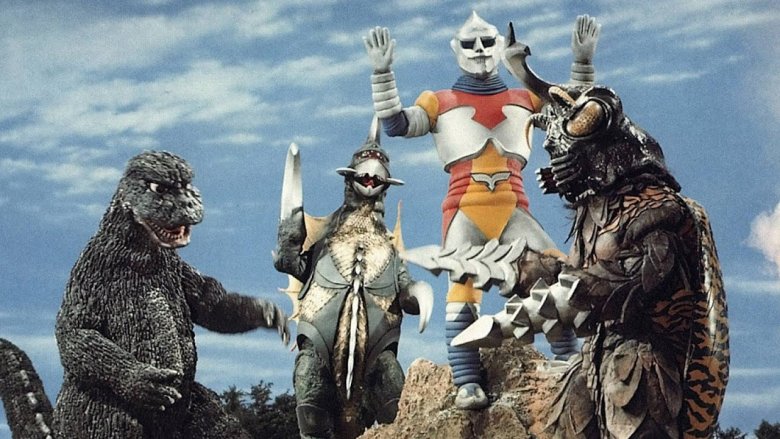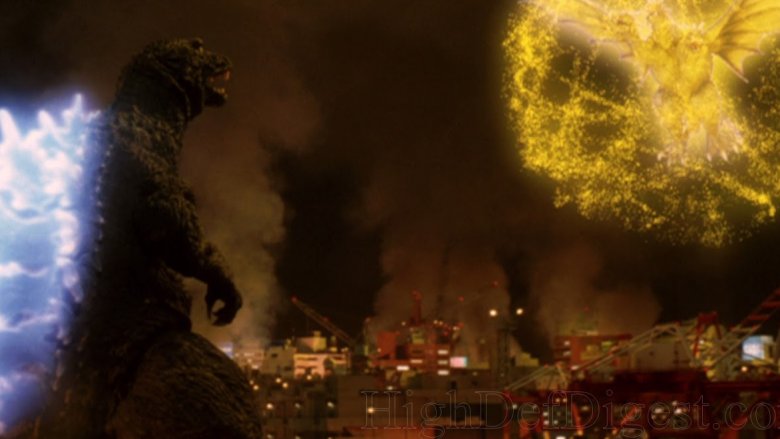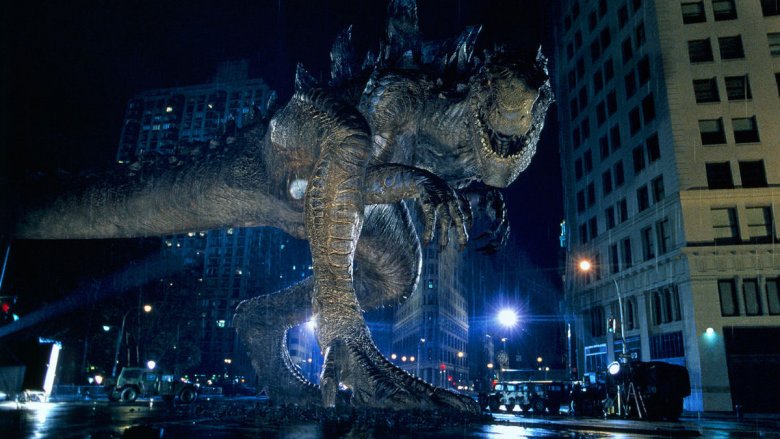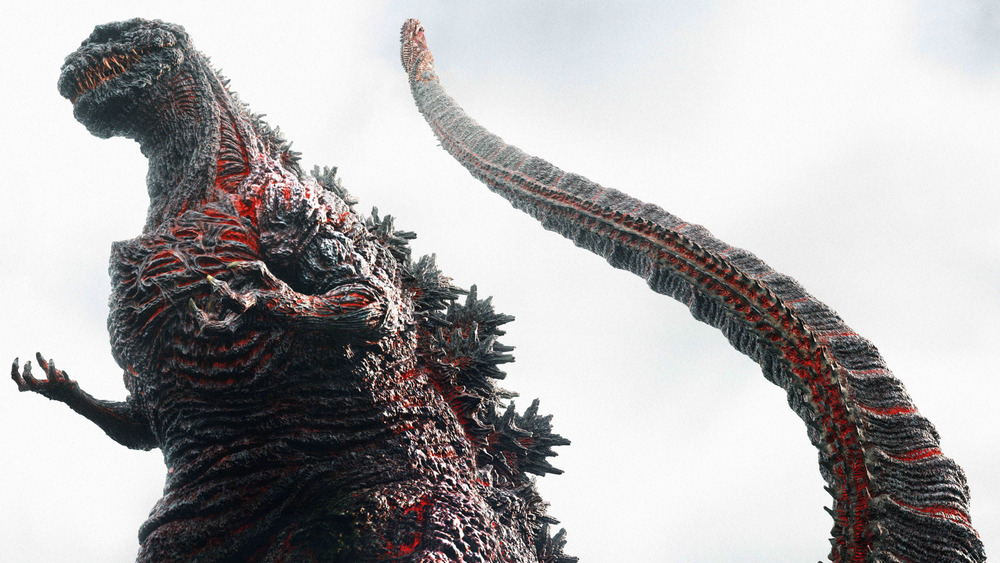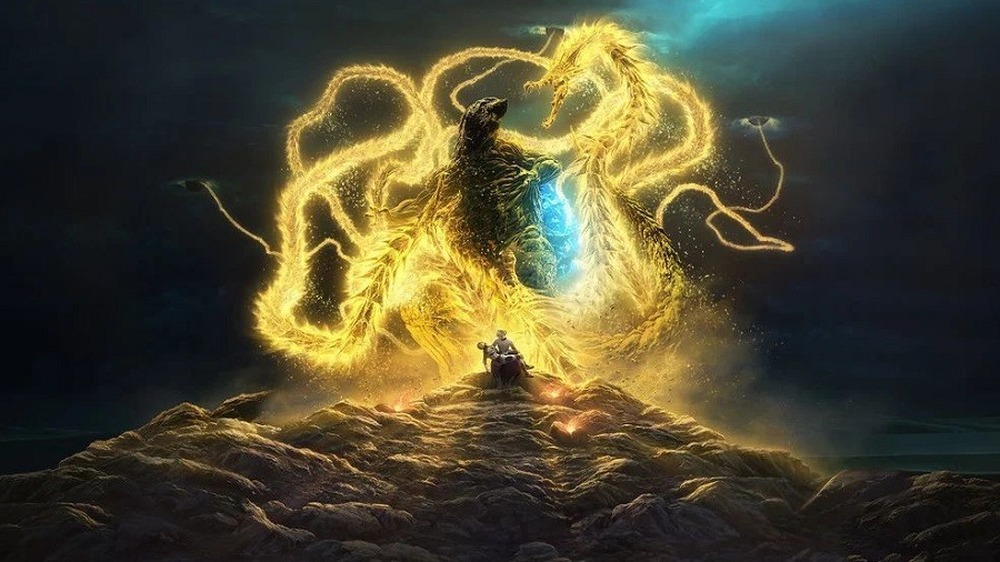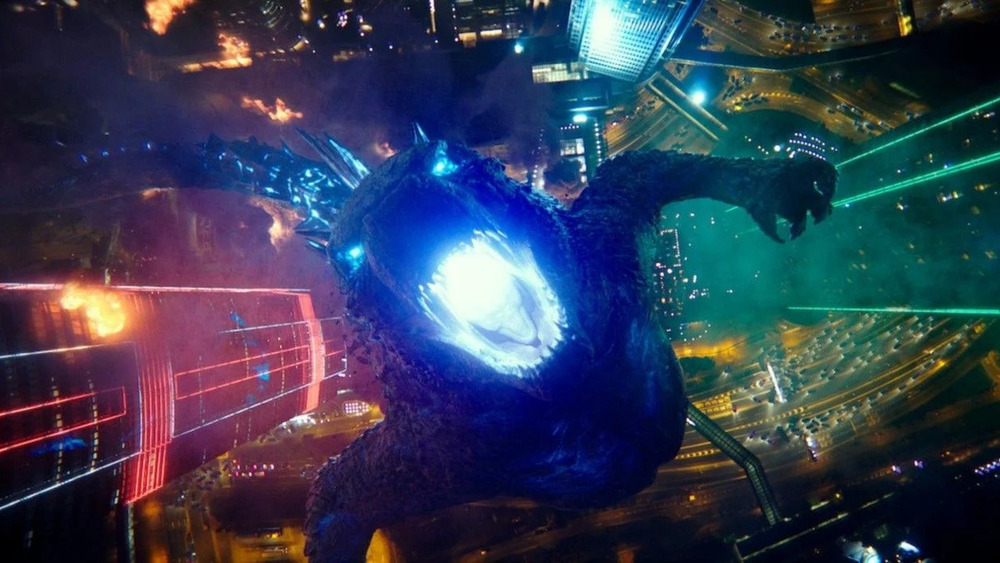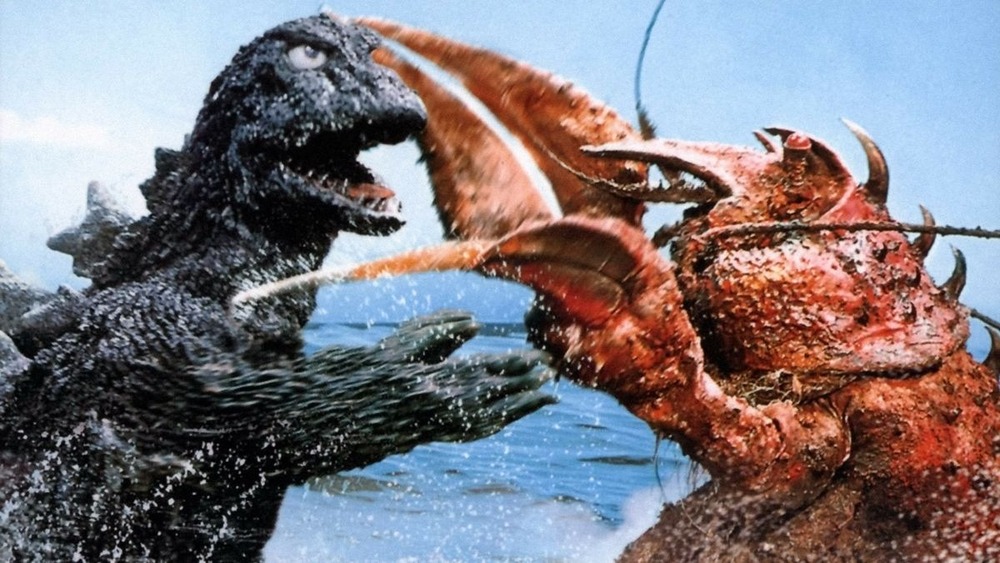The 7 Best And 7 Worst Godzilla Movies
This year, 65 years after the great monster first arrived on the shores of Japan, we will see the release of Godzilla: King of the Monsters, sequel to 2014's Godzilla and the third Hollywood film to star the legendary kaiju. The movie hopes to merge the Hollywood scale and atmosphere of the 2014 film with the decades of mythology built up by Godzilla's original production company, Toho, by bringing in several of Godzilla's most famous allies and enemies, including Mothra, Rodan, and Ghidorah.
The very premise of King of the Monsters asks us to look back at Godzilla's vast history, which now includes nearly three dozen films across four different eras of storytelling (the Showa Era, the Heisei Era, the Millennium Era, and the Reiwa Era). They range from dark depictions of post-nuclear Japan to comedic sci-fi romps to time travel sagas and everything in between. With so many films to choose from you might be wondering where to start. So, whether you're looking for the best Godzilla flicks or the most infamous, start here. These are the five best and five worst Godzilla movies.
Best: Godzilla (1954)
Yes, the very first Godzilla movie is still among the best, and not just because it's where our favorite giant radioactive lizard originated. Back when his story began, Godzilla was as much a metaphor for post-atomic Japanese anxieties about the future as he was anything else, and director Ishiro Honda leans into that metaphor at every possible turn. This is not a film full of gags and innovative kaiju fighting maneuvers. This is an atmospheric, dread-filled story about a nation haunted by the specter of something with massive implications and destructive potential.
For proof of this, look to the small, human moments. Godzilla's arrival in the film, peering over a mountain, is iconic, as is the rampage that follows, but Honda took particular time to focus in on the consequences of this giant monster's destruction. Close-ups on a mother and child as they flee Godzilla's path in Tokyo highlight the big, bold metaphors the film is working with, and help it to remain an absolute classic more than six decades after its release.
Worst: Godzilla Raids Again
Godzilla was a massive success upon its release in 1954, so of course it made sense for Toho to push out a sequel to the film as quickly as possible. That arrived the following year in the form of Godzilla Raids Again, and as is the case with a lot of quickly made sequels, the results are disappointing.
For one thing, though this is the first film to feature monster vs. monster combat as Godzilla battles fellow dinosaur-like creature Anguirus, the battles are not yet what they would later become. There's a lot of shuffling around, much of it an effort to look animalistic, but it's just not as fun as the full-on wrestling matches that would follow in future films.
The mythology is also a little underwhelming, particularly when you find out that this Godzilla is actually just another giant radioactive lizard from the same species, since they killed the original monster at the end of the first film. The film also suffers technically, featuring a good deal less atmosphere and visual artistry than its predecessor.
All that said, Godzilla Raids Again is still watchable, but it's the definition of a lackluster sequel.
Best: Ghidorah, the Three-Headed Monster
There's a reason the new Godzilla film, King of the Monsters, features the foursome of Godzilla, Mothra, Rodan, and King Ghidorah, and much of it can be traced back to this colossal classic released ten years after the first Godzilla film.
Much of the film's plot concerns a princess who is apparently possessed by an alien from Venus, trying to warn humankind of impending doom in the form of several massive monsters, including King Ghidorah in his very first appearance in the franchise. What she predicts comes to pass, and King Ghidorah — having already destroyed a once-thriving civilization on Venus, apparently — hatches on Earth to rain down destruction with its three heads, two tails, and lightning breath. Mankind's only hope is a team-up of Godzilla, Rodan, and Mothra, and it turns out it's up to Mothra to get that team-up started in the first place.
In one of the most iconic scenes in the entire franchise, Mothra actually talks (in monster-speak, with the Mothra priestesses known as the Shobijin translating for humans) to Rodan and Godzilla to convince them to help. When they decline, she flies into battle against Ghidorah on her own in a desperate effort to save humanity, cementing her place as the heart of the franchise. When the other two monsters finally join in, the kaiju carnage is some of the most powerful in the franchise.
Worst: Son of Godzilla
For a little while in the middle of the Showa era of Godzilla films, Toho tried to focus on keeping budgets in check while also devoting its better crews to other films, and unfortunately that sometimes shows in the work. The studio also experimented with broadening the franchise's appeal through the introduction of various new characters, which unfortunately brings us to Godzilla's son, Minilla.
There's nothing inherently wrong with Godzilla having offspring. In fact, later films also toyed with this idea to varying degrees of success. Here, though, the interactions between Godzilla and Minilla are played with such a comedic, put-upon-father sensibility that it starts to grate on you almost immediately. Minilla quickly becomes an annoyance, and his reputation as one of the more questionable choices in the franchise is secure.
That's not the only problem with the film, though. The creatures this time around — the giant mantises called Kamacuras and the giant spider called Kumonga — look cool, but because they're puppets instead of men in suits, the fight scenes are rather limited in terms of intensity. Plus the Godzilla suit built for this film (deliberately designed to make him look more like a parent) just... doesn't work.
Best: Godzilla vs. King Ghidorah
The Heisei era of Godzilla films kicked off with an attempt to return the character to its atomic horror roots with the somewhat divisive The Return of Godzilla in 1984, and things remained rather dark with Godzilla vs. Biollante in 1989. Those are both solid films, but the Heisei period really picked up steam with its third entry, which managed to maintain a relatively serious tone while also developing its own version of the Showa era's "throw everything at the screen" approach.
The story begins with the notion that Godzilla actually first appeared to humans as a smaller, less mutated dinosaur version of himself in 1944, when he saved a group of World War II soldiers. A group of time travelers from the future embark on a mission to stop the dinosaur from being irradiated and thus turning into Godzilla, but it turns out their real mission was to swap the dinosaur out for three smaller creatures who would then be irradiated to create... King Ghidorah.
Things only get more convoluted from there, but what all of this essentially builds to is a battle between Godzilla and Mecha King Ghidorah, a version of the three-headed monster that's been mechanically modified by people from the future to give it one cybernetic head and a host of other gadgets. The whole film is a blast, but it's worth it for the final battle alone.
Worst: All Monsters Attack
It's inevitable in a franchise that's as varied and long-lasting as the Godzilla films that occasional corners will be cut. Sometimes that results in relatively small-scale storytelling like Son of Godzilla, which is largely relegated to Monster Island, and sometimes that results in lackluster kaiju battles and other shortcomings. It also means that, at one point in the Godzilla series, we got a film that was in some ways just a sizzle reel for Godzilla films which came before it.
All Monsters Attack, also known as Godzilla's Revenge, is the story of a young boy named Ichiro who dreams of Monster Island to escape his lonely, bullied life. In his dreams he befriends Godzilla's son Minilla, and the two deal with their respective bullies through the power of friendship. This isn't necessarily a bad concept, but the film also leans heavily on footage of Godzilla that's been recycled from Son of Godzilla and Ebirah: Horror of the Deep, among others. There's also the problem of Minilla, who remains annoying despite his noble quest to overcome his bully. There's nothing necessarily wrong with the premise, but the execution leaves a lot to be desired.
Best: Godzilla vs. Destoroyah
The final film in the Heisei period of Godzilla films had to go out with a bang, and while that could have been just another monster team-up movie, what we got is one of the most moving and ambitious films in the entire franchise. When Godzilla appears with glowing marks all over his body, scientists determine that his heart, which functions as a nuclear reactor, is in fact melting down, and that his impending death could pack enough power to wipe out the planet. As if that weren't trouble enough, they also discover that the original "Oxygen Destroyer" device used to kill Godzilla in the very first film in 1954 also mutated a group of prehistoric sea creatures into giant crustacean monsters which then merge into one super-monster that basically looks like the devil itself.
Godzilla vs. Destoroyah has it all: Godzilla in ultimate peril, a monster antagonist that's both legitimately creepy and appropriately massive, telepath characters who generate real empathy, and it even somehow manages to pull off a "Godzilla Junior" plot that really lands. It all culminates in a truly effective finale that shows us the death and rebirth of Godzilla in a way no other film has.
Worst: Godzilla vs. Megalon
In the 1970s, Toho was hoping to create its own giant hero modeled after the success of the Japanese character Ultraman, and held a contest asking children to design their own hero. The resulting character, after plenty of tweaks by the studio, was the giant robot Jet Jaguar, who was originally supposed to get his own film. Somewhere along the way the Jet Jaguar film was merged with a Godzilla film, and Godzilla vs. Megalon is the result.
Godzilla and a giant robot man in the same movie definitely sounds like fun, but the film itself suffers from a rushed production process, one of the less impressive monster designs in the form of Megalon, and a plot that spends more time with Jet Jaguar than you end up wanting. The film is also infamous for its depiction of Godzilla executing a drop kick that ends up looking like he's riding his own tail, and the monster fights don't really improve beyond that.
Best: Godzilla, Mothra and King Ghidorah: Giant Monsters All-Out Attack
First of all, just look at the title. Read it out loud a couple of times. It's one of the best introductions you could hope for to a Godzilla film, because it tells you exactly what you're about to see without spoiling how you're going to see it.
Like many other entries in Godzilla's Millennium era, Giant Monsters All-Out Attack functions as a direct sequel to the original 1954 film, ignoring all previous installments. That means this film once again frames Godzilla as a villain hellbent on destruction, and once again depicts the first meeting between Godzilla and two of his greatest co-stars: Mothra and King Ghidorah. In this film, the latter two monsters (along with the comparably minor character Baragon) are framed as "guardian" monsters who have to be awakened to save the world from Godzilla, and the twists and turns that result from this mythos help drive the film even beyond its fun kaiju battles. At one point Mothra's spirit merges with Ghidorah to create "King Ghidorah," and though the visual effects are a little dated, it remains a sight to behold. This movie is pure monster fun, and proof that sometimes you need to wipe the slate clean to build something new within a seemingly immortal franchise.
Worst: Godzilla (1998)
Yes, director Roland Emmerich's 1998 Godzilla film, the first American attempt at a reboot for the creature, gets a lot of hate thrown its way. People don't like the creature design, they don't like Matthew Broderick cast as the scientist poised to take down Godzilla, they don't like the whole conceit of the creature having babies, and sometimes they just don't like the 1990s of it all. Godzilla '98 is an easy film to hate for a number of reasons.
Despite all of those reasons, though, the biggest problem with Emmerich's film is the frustration that comes from watching it, because if you're really paying attention you do get the sense that there was almost, maybe, possibly a hint of a good movie lurking in there somewhere before everything went wrong. There are some truly interesting moments in the film, from Broderick's character standing in a footprint and not realizing it's a footprint to the creature's first appearance in New York City. Sadly, that's not enough to carry the film even as a campy "so bad it's good" movie. It's just a series of confrontations with a monster so things can explode for a few minutes before the film sets things up for the next set of explosions, and then it ends.
Best: Shin Godzilla (2016)
After the success of Legendary's Godzilla in 2014, Toho decided to reboot its own Godzilla franchise with possibly the scariest incarnation of Godzilla ever. Called Shin Godzilla — also known as Godzilla Resurgence — the film is part of the Reiwa era of the series and the 31st Godzilla picture. Co-directed by Neon Genesis Evangelion's Hideaki Anno and Attack on Titan's Shinji Higuchi, Shin Godzilla's kaiju is entirely new, as if the 1954 version never existed. The movie features sharp satire of the Japanese government as it deals with a creature arising from the sea and evolving into an enormous, needle-toothed monstrosity with beady eyes and a devastating pulse attack that comes out of its mouth and spines. The U.S. comes in for criticism as well as it tries to dictate how Japan should deal with Godzilla, threatening to drop an atomic bomb on Godzilla.
Godzilla here returns to his roots as a metaphor for mass disaster — in this case, the 2011 Tōhoku earthquake and tsunami and subsequent Fukushima Daiichi nuclear meltdown. The populace's reactions to Godzilla are realistic, as are the scenes of destruction caused as he morphs from one hideous form to the next. The way Godzilla is depicted makes it appear that his existence is one of excruciating pain. While the government dithers in endless meetings and scientists struggle to come up with a way to stop Godzilla, he slowly lumbers to Tokyo for a final showdown.
The movie ends ambiguously with Godzilla frozen in place, a looming symbol that everything could go to hell quickly should Godzilla start thawing. The lingering image of smaller, humanoid Godzilla-like creatures emerging from the tip of Godzilla's tail is also a haunting reminder that disaster could strike again... and again and again.
Worst: Godzilla: The Planet Eater (2018)
Godzilla: The Planet Eater is considered a disappointing end to an anime trilogy that began with 2017's Godzilla: Planet of the Monsters and continued with 2018's Godzilla: City on the Edge of Battle, though there are some who found it a vindication of the series.
Haruo, the main protagonist voiced by Mamoru Miyano, has a big grudge against Godzilla and with good reason, as Godzilla and other kaiju have emerged on Earth and taken it over. Earth has also been visited by not one, but two alien species, the Exif and the Bilasaludo, who cannot defeat Godzilla, foiling their plans to invade the Earth. Having all fled the rampaging Godzilla on the spaceship Aratrum, the humans and aliens return two decades later to find that not only have 20,000 years passed on Earth, but that both Earth and Godzilla have significantly changed, with Godzilla DNA present everywhere. The humanoid Houtua, a spiritual race who worship Mothra, are also involved.
Godzilla: The Planet Eater includes Godzilla's main antagonist, King Ghidorah, who's summoned by the religious Exif in a "shadow" form. Haruo has conflict with both the Bilasaludo, who blame him for their predicament, and Exif priest Metphies, voiced by Takahiro Sakurai, whose religious fervor leads to the destruction of the Aratrum via Ghidorah and who manipulates Haruo throughout the series.
The philosophical underpinnings of the trilogy's end are somewhat downbeat. Humanity can best survive if it reverts to a more primitive lifestyle, eschewing technology and submitting to the will of gods and monsters, both literal and not. This message appears not to have resonated with many, putting Godzilla: The Planet Eater in the "Worst" category.
Best: Godzilla vs. Kong (2021)
This chapter of Legendary's MonsterVerse not only ruled the U.S. box office in its first weekend of release, but has the second-highest audience score for a Godzilla movie behind Godzilla vs. Destoroyah, according to Rotten Tomatoes.
Godzilla vs. Kong promises an epic battle between the titular kaiju, and delivers with several rounds of ferocious fighting as Godzilla and Kong vie for the right to be the one true Kaiju king. Over three years have passed since the events of Godzilla: King of the Monsters, with the Titans, including Godzilla, having remained out of sight. Kong is over on Skull Island being monitored by Monarch. The discovery of Hollow Earth and shenanigans at Apex Cybernetics bring Godzilla and Kong directly into conflict, as the Big G is not happy with what Apex is developing, and even less so once he realizes his ancient rival Kong is all grown up.
To borrow from Saturday Night Live's Stefon, this movie has everything: giant monsters brawling, creepy mech, awesome tech, beautiful special effects, Easter eggs galore, and... mostly irrelevant human interaction. The film is tons of fun, and in the tradition of many Godzilla films, what the human beings are doing generally takes a back seat to the spectacle of two of popular culture's best-known beasts whaling on each other. It's no wonder that fans of the genre and fans of blockbuster action in general have responded so positively to it.
Worst: Ebirah, Horror of the Deep (1966)
Ebirah, Horror of the Deep, also known as Godzilla vs. the Sea Monster and Godzilla – Ebirah – Mothra: Big Duel in the South Seas, begins the stage of the Showa era when Godzilla gets silly and Toho cuts costs. The film features a friendlier-looking Godzilla fighting what's basically a giant lobster. Originally conceived as a vehicle for King Kong, the project was retooled when Toho and Rankin/Bass, which produced a King Kong cartoon, couldn't come to terms on Kong's use. Well, not really "retooled" so much as just sticking Godzilla in where Kong would appear.
The movie is a jumble of spy shenanigans, terrorists called the Red Bamboo enslaving islanders, a damsel in distress, and a criminal who reforms after his misadventures. Godzilla doesn't just fight Ebirah, but Mothra, too, as she arrives to save her people, all before the island is nuked out of existence. The movie is slow-paced and it takes a long time for Godzilla to appear, even by Godzilla film standards.
Ichiro Honda did not direct this mess; that fell to Jun Fukuda, who would go on to direct Godzilla vs. Megalon. Godzilla mainstay Akira Takarada plays bank robber Yoshimura, who hides out on a boat that gets stolen by a man and his friends searching for the man's missing brother. The boat is attacked by Ebirah and the group washes up on Red Bamboo's base. They stumble upon Godzilla, deciding to awaken him as a distraction to help Mothra's people escape. Later on, Godzilla and Ebirah play ping-pong with a rock. It's... not good.
